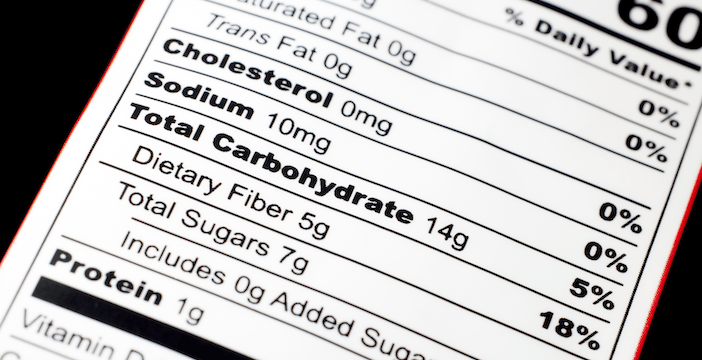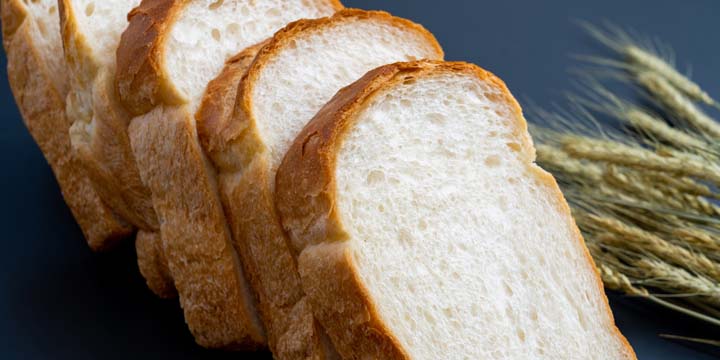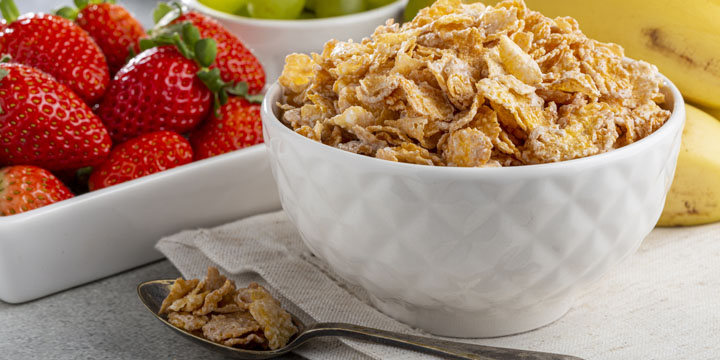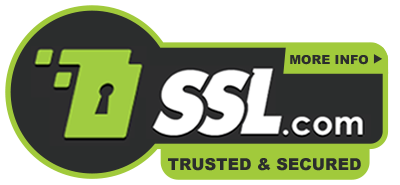
One of the most valuable tools available to Canadians living with diabetes is the Nutrition Facts table found on packaged foods. Learning how to read food labels can help you make informed choices about what you eat every day.
Why is it important to learn to read food labels?
Food labels provide a lot of information about what is inside a packaged food item. Understanding this information can help you:
- monitor your carbohydrate intake
- identify added sugars
- choose high fibre foods to help regulate blood sugar and keep you feeling full for longer
- find low sodium options to help manage blood pressure
- compare products
- help with meal planning
What are the important things to look at on a food label?
Serving size
A key thing to check on a label is the ‘serving size’. Food labelling changes by Health Canada over recent years have helped to ensure that serving sizes are more realistically reflective of the amount that we typically eat. Be sure to adjust all this information to the amount you plan to serve. For example, if the serving size is 8 chicken nuggets and you plan to serve 4, you will halve all the numbers given.
% Daily Value (%DV)
This scale tells you if there is a little or a lot of a nutrient in the listed serving size of the food. Use this percentage to compare the nutrient content of different foods.
- 5% Daily Value or less is ‘a little’
- 15% Daily Value or more is ‘a lot’
Carbohydrates
The total carbs per serving is an important item and this includes the fibre value on the label. When you are looking at the total carbs that you must consider for a given portion, you can subtract the fibre, since fibre does not affect blood glucose levels. For instance, a cereal may have a total of 20g of carbohydrate which includes 5g of fibre. The total carbohydrate that needs to be considered in this example is 20g – 5g = 15 g carbohydrate. “Sugar” is also included in the total carb count and it is the carb amount that is more important than the sugar amount.
Fibre
Aim for high-fibre foods (≥4g per serving). Fibre slows sugar absorption. Soluble fibre helps stabilize blood glucose and improve cholesterol. Get more information about types of soluble fibre you should include in your diabetes meal plan.
Sugars
Look at the ‘Sugars’ line under ‘Carbohydrates’, which includes both naturally occurring and added sugars. Reading the ingredient list is your best clue to determine if there are added sugars. Look for words such as ‘sugar, brown sugar, glucose, fructose, sucrose, etc.’ If these are listed as one of the top 3 ingredients, the product is likely high in sugar, as they are listed in descending order by weight.
Fats
When reading a food label, look for unsaturated fats, specifically monounsaturated and polyunsaturated fats, as these are considered “good” fats. Watch for saturated and trans fats (considered ‘bad fats’) —excess intake of these can increase your risk of heart disease. Healthy fats, such as those from nuts, seeds, and fish, can support heart health, which is especially important for people with diabetes.
Sodium
Cutting back on salt (sodium) in your diet is one of the best ways to help curb your blood pressure, especially if you’ve been diagnosed with hypertension. Processed foods tend to have the highest salt content (items like frozen pizza and canned soup). Hypertension Canada recommends limiting sodium intake to less than 2000 mg per day, which is approximately 5 grams of salt. To make informed choices when reading food labels, aim for foods with 0-120 mg of sodium per serving (0-5% daily value). Foods with 121-360 mg of sodium per serving (6%-14% Daily Value) should be consumed in moderation, while those with more than 360 mg of sodium per serving (≥15% Daily Value) should be avoided or limited.
Calories
It is important to consider the amount of calories in a serving, since this helps with weight management, which is key to controlling type 2 diabetes. Choose foods that are nutrient-dense but not calorie-heavy.
Newer to food labelling in Canada
Look for the Nutrition Symbol on the front of the package. Avoid these “high in” symbols which will be mandatory for prepackaged foods that meet or exceed set levels for saturated fat, sugars or sodium.
Understanding food labels empowers you to take control of your diabetes. It’s not about perfection but about making informed choices most of the time. If you’re unsure how to apply this knowledge to your personal meal plan, consult a registered dietitian or certified diabetes educator for individualized advice.



